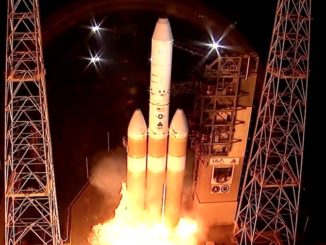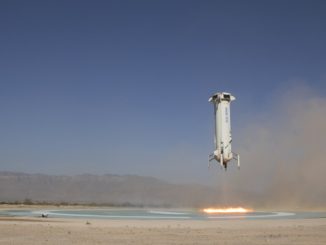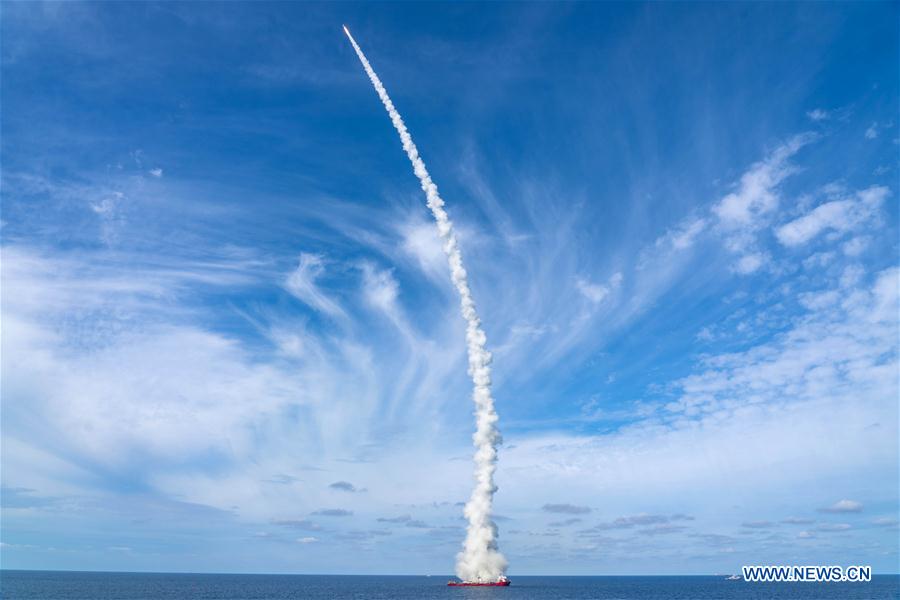
A solid-fueled Long March 11 launcher delivered nine small Chinese Earth observation satellites to orbit Tuesday after firing off a ship positioned in the Yellow Sea.
The four-stage rocket blasted off from the De Bo 3 launch platform in the Yellow Sea at 0123 GMT Tuesday (9:23 p.m. EDT Monday), according to China’s government-run Xinhua news agency. Liftoff occurred at 9:23 a.m. Beijing time.
The booster quickly raced into the sky, heading south over the Yellow Sea trailing a plume of solid rocket exhaust. Chinese officials later declared the mission a success, and U.S. military tracking data showed the rocket reached a polar sun-synchronous orbit very close to the targeted altitude of 332 miles (535 kilometers).
The Long March 11 flight Tuesday was the second Chinese sea-based launch into orbit, following a Long March 11 mission in June 2019. With the mission this week, China has launched Long March 11 rockets on 10 missions since 2015, and all have been successful.
Developed by the state-owned China Academy of Launch Vehicle Technology, or CALT, the Long March 11 measures about 68 feet (20.8 meters) tall and nearly 7 feet (2 meters) in diameter. It can haul up to 770 pounds (350 kilograms) of payload to a 435-mile-high (700-kilometer) sun-synchronous orbit.
The rocket configuration used for sea-based launches is known as the Long March 11H. The launch operations Tuesday were managed by teams from the land-based Taiyuan spaceport.
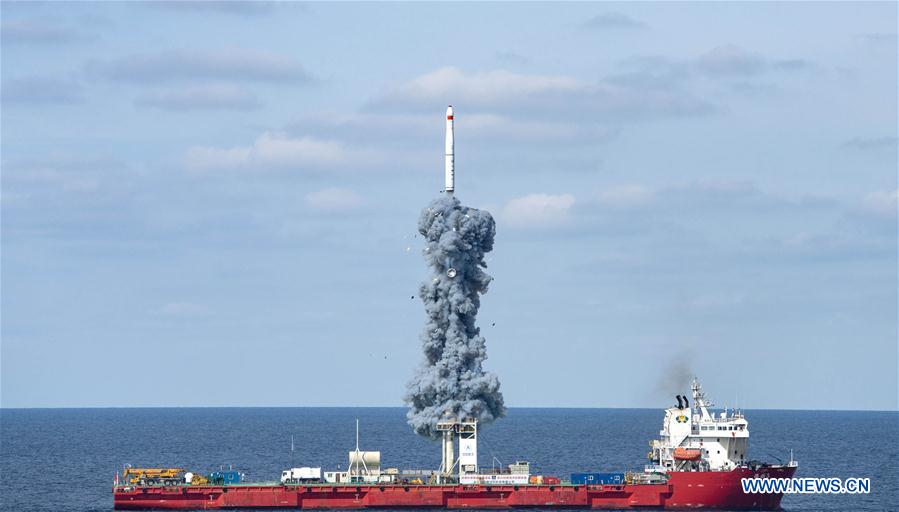
The nine satellites launched Tuesday will join a fleet of Earth-imaging satellites owned by Chang Guang Satellite Technology Co. Ltd., a commercial remote sensing company based in China’s Jilin province. Founded in 2014, the company has launched 25 commercial Earth-imaging satellites since 2015, including the nine spacecraft deployed this week.
In a statement, Chang Guang said six of the satellites launched Tuesday carry push-broom imagers to collect high-resolution photos around the world. Those are part of the company’s Jilin 1 Gaofen-03B constellation.
The other three spacecraft, designated as Jilin 1 Gaofen-03C satellites, are built for high-definition video imaging, the company said.
Each spacecraft weighed around 88 pounds, or 40 kilograms, at the time of launch, Chang Guang said. The push-broom imaging satellites have a resolution of about 3.3 feet, or 1 meter,
The video satellites can collect imagery with a resolution of about 3.9 feet, or 1.2 meters, covering an area of about 8.9 miles (14.4 kilometers) by 3.7 miles (6 kilometers), the company said in a statement.
Chang Guang said two of the video satellites were sponsored by CCTV, China’s state-run television network, and the Chinese video streaming platform Bilibili to use imagery of Earth in media content and popular science videos.
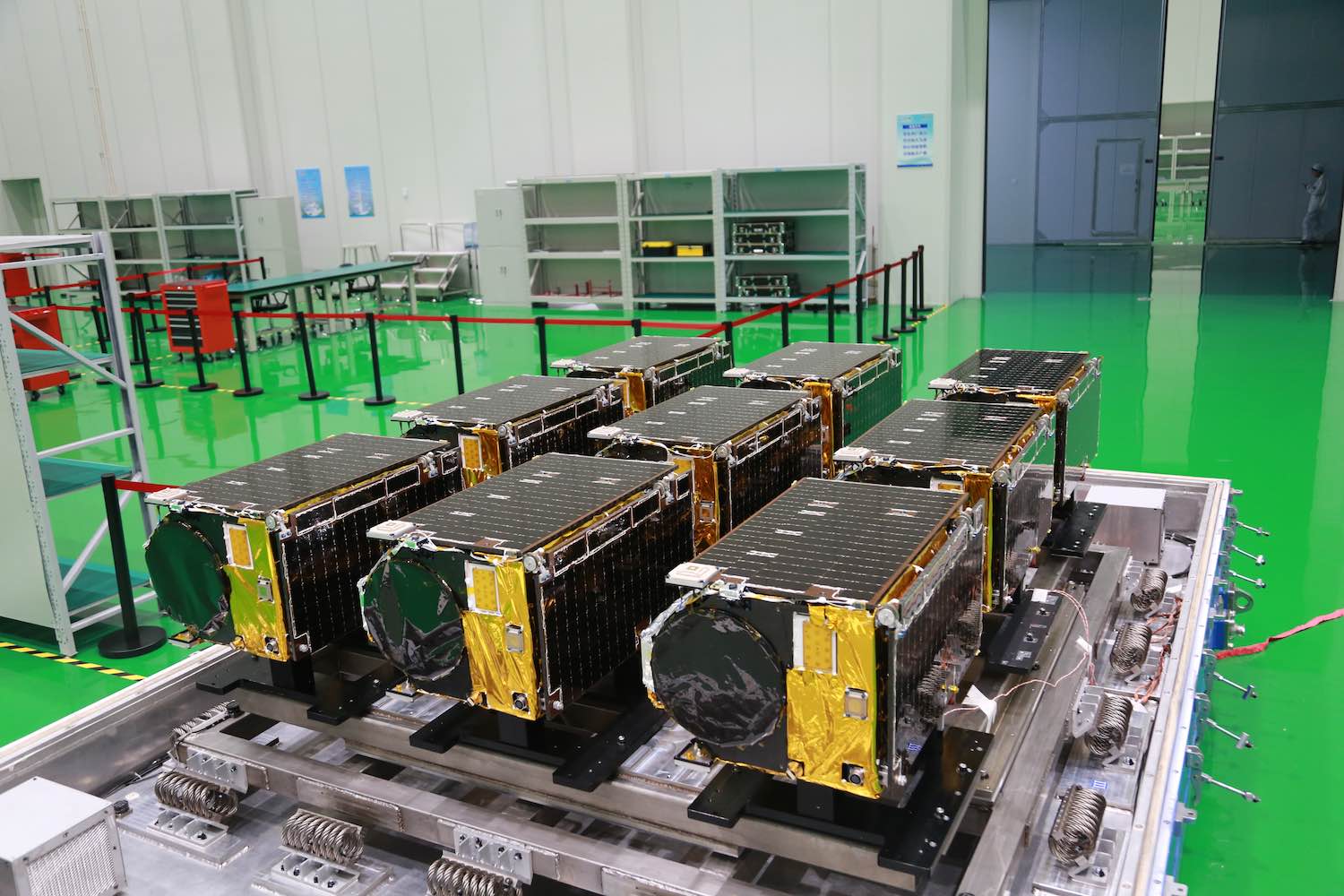
The launch Tuesday signals the transition from Chang Guang’s research and development phase to full-scale production, the company said. Chang Guang, which builds its own satellites, aims to launch a fleet of 138 Earth observation satellites in the coming years.
Images from the Jilin 1 satellites can be used in land and resource monitoring, urban planning, and disaster management, officials said.
The successful Long March 11 flight Tuesday marked the 27th orbital launch attempt by China so far this year.
Email the author.
Follow Stephen Clark on Twitter: @StephenClark1.


